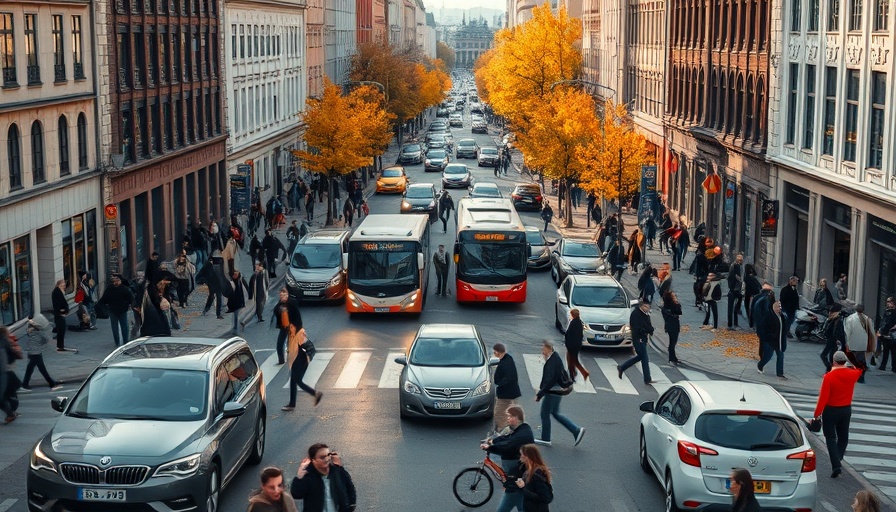
Helsinki Achieves Remarkable Milestone: A Year Without Traffic Fatalities
In an inspiring testament to urban planning and community commitment, Helsinki has celebrated an entire year without a single traffic death. This achievement marks a significant turning point for a city that once faced around 30 traffic fatalities annually, particularly during the 1980s. The transformation can be attributed to a comprehensive strategy involving lower speed limits, improved public transportation, and redesigned streets that prioritize safety for pedestrians and cyclists.
The Power of Community and Transportation Improvements
Helsinki’s journey toward safety began with significant innovations in public transport, making it more reliable and appealing. As residents increasingly opted for buses and trams over personal vehicles, the overall number of vehicles on the roads declined, contributing to safer conditions. With the enhanced transportation infrastructure, fewer individuals felt the need to take the risk of driving, leading to a gradual reduction in traffic-related accidents.
Lower Speed Limits: A Direct Impact on Safety
A key factor in Helsinki’s success has been the reduction of speed limits throughout the city—from 30 mph to a safer 18 mph. Roni Utriainen, a traffic engineer with Helsinki’s Urban Environment Division, emphasized that these changes play a vital role in enhancing pedestrian safety. Lower speed limits allow motorists more time to react, which in turn reduces the severity of accidents that may occur.
Data-Driven Solutions to Enhance Urban Safety
Innovations in urban infrastructure have further supported Helsinki’s mission to eliminate traffic deaths. The city has embraced data-driven planning, leading to the redesign of old grid layouts. By incorporating cycling and pedestrian pathways in safer locations, along with the implementation of traffic cameras and automated speed enforcement, Helsinki has addressed the growing trends in urban mobility, including the rapid increase in electric scooters.
Learning from the Past: A Culture of Safety
Reflecting on the city’s steps toward safety, Utriainen noted that the positive direction of road safety initiatives has been evident for several years. Notably, Helsinki reported that no pedestrians were killed in traffic in 2019. This shift illustrates how a sustained focus on safety measures can have a profound impact on community health.
Spotlight on Future Trends and Challenges Ahead
As Helsinki continues to prioritize pedestrian and cyclist safety, the city acknowledges the need to adapt constantly. The increasing presence of electric scooters presents new challenges that urban planners must address to maintain safety. The city’s leadership remains committed to evolving its strategies to ensure the ongoing safety of all road users.
Conclusion: A Blueprint for Other Cities
Helsinki’s achievement of a full year without traffic deaths serves as a powerful example for cities worldwide. By implementing practical solutions, encouraging the use of public transit, and fostering a culture of safety, Helsinki is setting a new standard for urban living. The city’s collaborative efforts underscore the importance of community and government working in tandem to create safer public spaces.
As urban areas continue to grow, the lessons from Helsinki can inspire other cities to pursue similar paths, ensuring that the roads are not just avenues for transportation, but safe havens for all.
 Add Row
Add Row  Add
Add 




Write A Comment